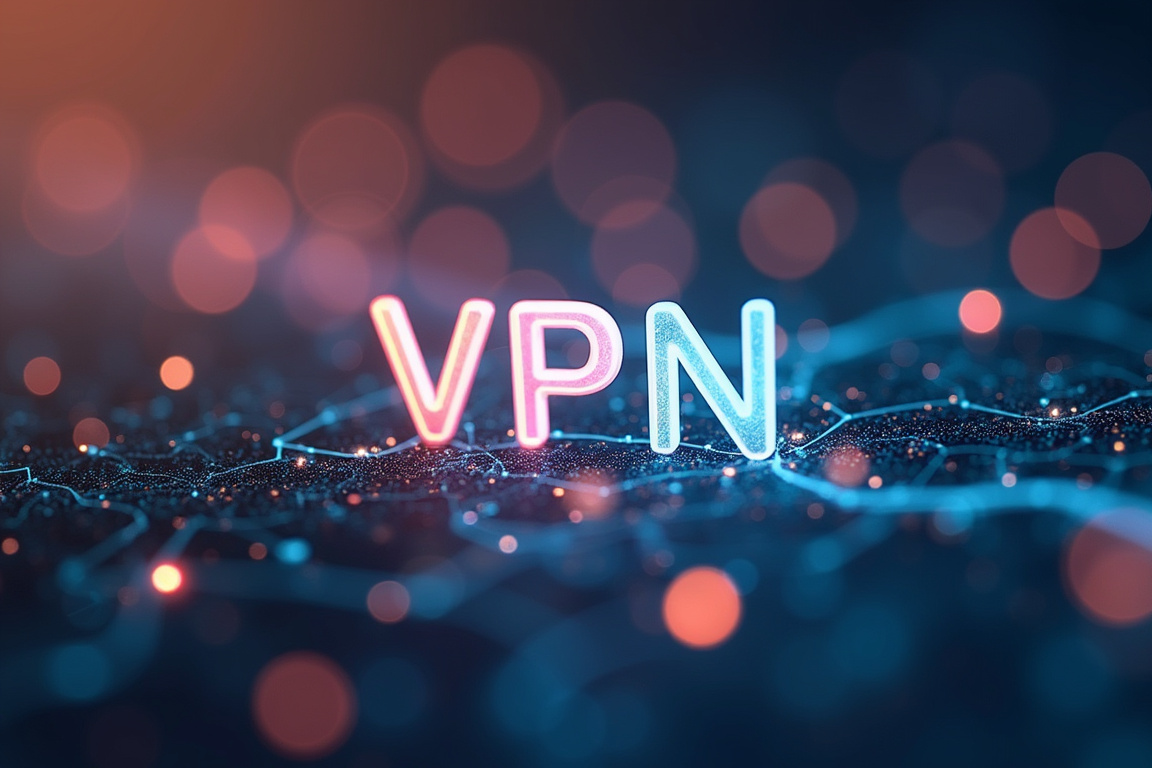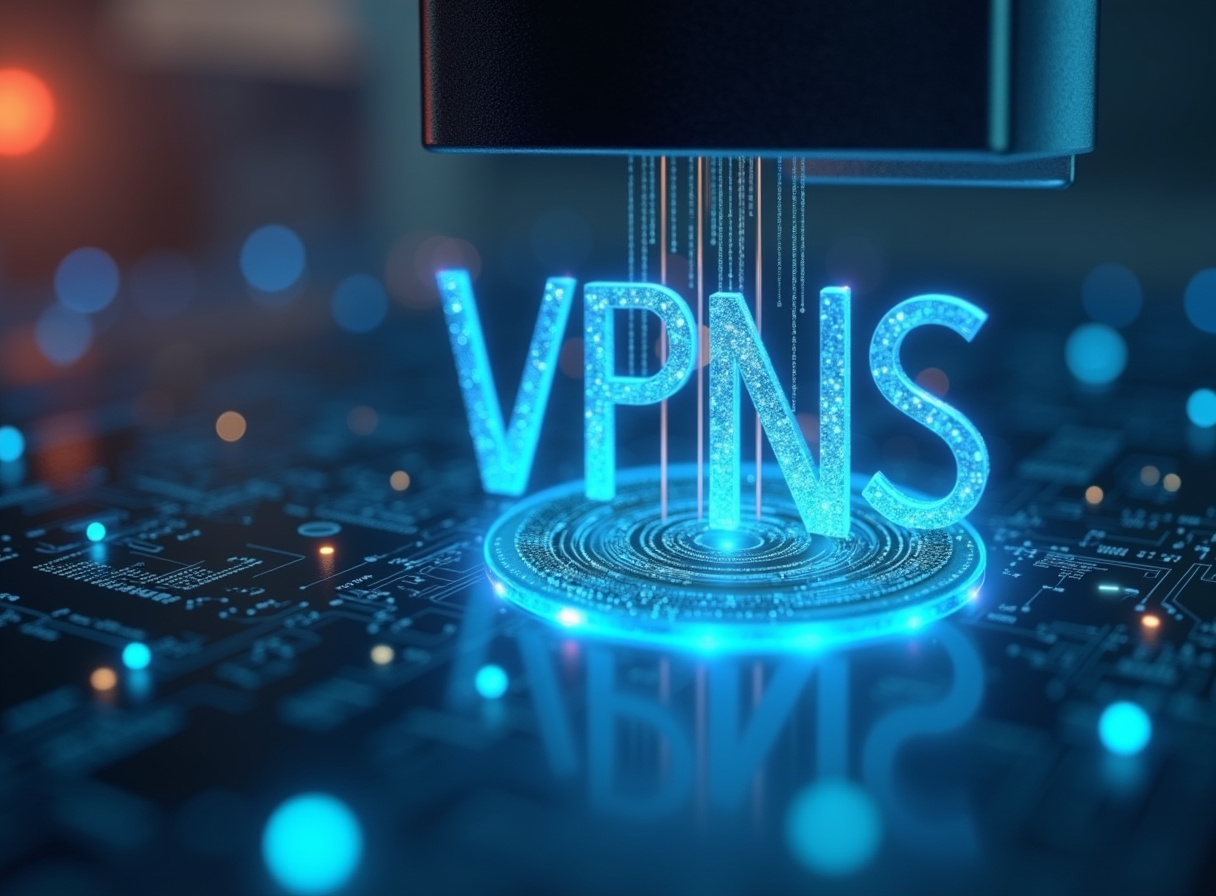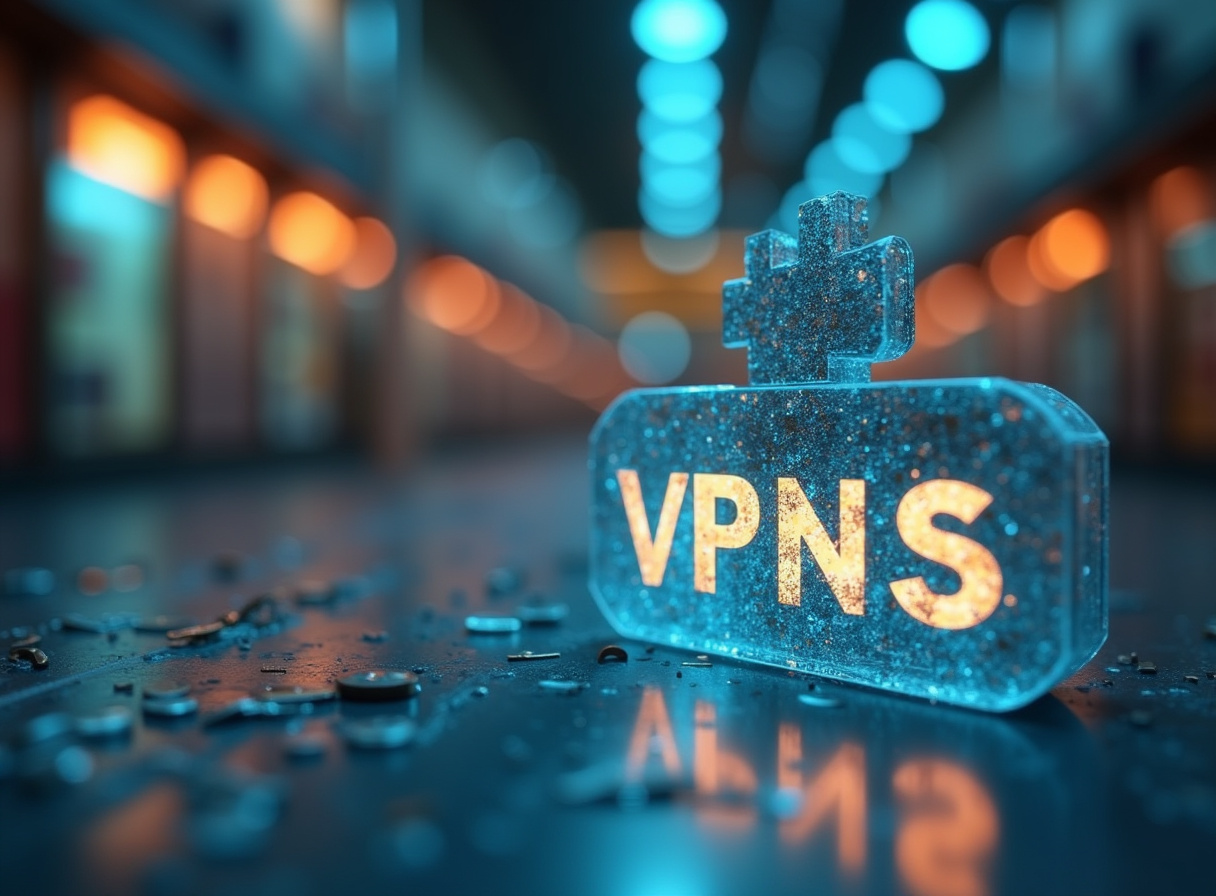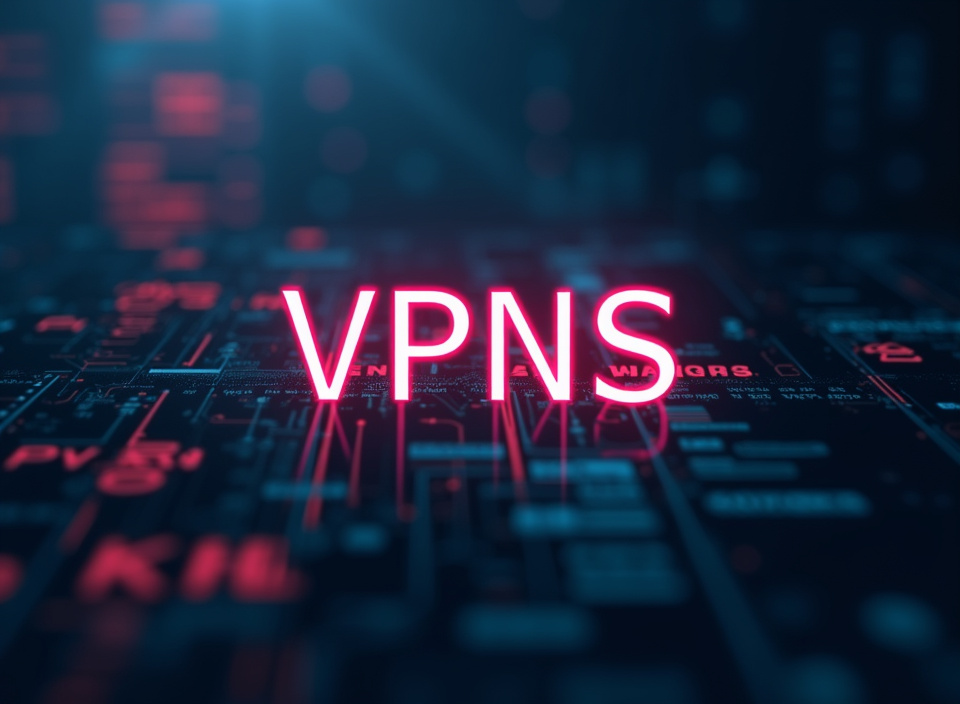VPNs for Industrial Designers: Protecting Design Concepts

Table of Contents
Introduction: Why Industrial Designers Need VPNs
The realm of industrial design is a hotbed of innovation, where groundbreaking ideas take shape and tangible products are brought to life. However, this creative process is inherently vulnerable. Industrial designers constantly juggle sensitive information, from nascent design concepts to proprietary manufacturing processes, making them prime targets for intellectual property theft and industrial espionage.
In an increasingly interconnected world, where collaborations span continents and data breaches are commonplace, securing these valuable assets is paramount. A Virtual Private Network (VPN) offers a robust and versatile solution, acting as a digital shield that protects design concepts, facilitates secure client collaboration, and safeguards intellectual property throughout the design lifecycle. For industrial designers, a VPN is no longer a luxury; it's an essential tool for maintaining a competitive edge and ensuring the integrity of their work.
The very essence of industrial design hinges on the creation and protection of unique ideas. From initial sketches to detailed 3D models, every stage of the design process generates valuable intellectual property that needs to be carefully guarded. The consequences of a design leak can be devastating, potentially leading to lost revenue, damage to reputation, and the erosion of a company's competitive advantage.
Therefore, implementing robust security measures is crucial for industrial designers of all sizes, from independent freelancers to large corporations. The core benefit a VPN provides is an encrypted tunnel between the designer's device and a remote server. This means that all data transmitted, whether it's design files, email communications, or video conference calls, is scrambled and rendered unreadable to unauthorized parties.
This is particularly crucial when working on public Wi-Fi networks, which are notoriously insecure and vulnerable to eavesdropping. Imagine a designer working remotely from a coffee shop or a co-working space, relying on the public Wi-Fi. Without a VPN, sensitive design data could be intercepted by hackers lurking on the same network, potentially leading to devastating consequences.
The risk is real, and the potential damage is immense. Beyond basic encryption, a VPN can also mask the designer's IP address, effectively anonymizing their online activity. This makes it much more difficult for malicious actors to track their location or identify their online behavior.
This anonymity is not just about privacy; it's also about security. By concealing their IP address, designers can prevent targeted attacks aimed at exploiting vulnerabilities in their network or devices. Furthermore, a VPN allows designers to bypass geographical restrictions and access resources that may be blocked in their current location.
This can be particularly useful when collaborating with international clients or accessing design libraries and databases that are only available in certain regions. More advanced VPN solutions offer features like a kill switch, which automatically disconnects the internet connection if the VPN connection drops, preventing any unencrypted data from being transmitted. This is a critical safety net, ensuring that even if the VPN connection fails unexpectedly, sensitive data remains protected.
They may also include DNS leak protection, which ensures that all DNS requests are routed through the VPN server, preventing any potential leaks of sensitive information. Selecting the appropriate industrial design VPN involves evaluating several key factors: the strength of the encryption protocols used, the number and location of servers available, the logging policy of the provider, and the overall performance and reliability of the service. Industrial designers should prioritize VPNs that use strong encryption standards, such as AES-256, and have a strict no-logs policy, meaning they do not store any records of user activity.
This ensures the highest level of privacy and security. It's also important to consider the VPN's speed and bandwidth, as large design files can require significant data transfer. A slow VPN can significantly impact productivity and hinder the design process.
Ultimately, the best VPN for an industrial designer is one that provides a comprehensive suite of security features, offers reliable performance, and respects user privacy. It should seamlessly integrate into their workflow, providing a seamless and secure environment for creative exploration and collaboration, therefore in conclusion the industrial design VPN and the level of 'design concept security' that it can provides are a must for a professional industrial designer.
Understanding the Threats: Protecting Intellectual Property
The threat landscape for industrial designers is multifaceted and constantly evolving. It's not just about external hackers trying to steal design concepts; internal threats, such as disgruntled employees or accidental data leaks, can also pose significant risks. A well-configured VPN can mitigate many of these risks by controlling access to sensitive data and monitoring network activity.
Think of the increasing reliance on cloud-based collaboration tools, which, while convenient, can also introduce new vulnerabilities. A design firm might use a popular cloud storage service to share design files with clients and team members. While the service itself might have security measures in place, the data is still vulnerable if the connection is not properly secured.
This is where a VPN comes in, providing an encrypted tunnel that protects the data as it travels between the designer's device and the cloud server. Imagine a scenario where a team of designers is working on a confidential project for a major client. The design files are stored on a central server, and each team member accesses them remotely.
Without a VPN, these files are vulnerable to interception during transmission. However, with a VPN in place, all data exchanged between the designers' devices and the server is encrypted, ensuring that only authorized personnel can access the information. Moreover, a VPN can be used to create secure tunnels between different offices or locations, allowing designers to collaborate seamlessly regardless of their physical location.
This is particularly important for companies with multiple branches or remote employees. By establishing a virtual private network, they can create a centralized hub for design data, ensuring that everyone is working with the latest versions and that all communication is secure. This is crucial for maintaining consistency and preventing errors that could compromise the integrity of the design.
Securing design concepts goes beyond simply encrypting data; it also involves implementing robust access control measures. A VPN can be configured to restrict access to certain resources based on user roles or permissions. For example, designers working on a specific [industrial design VPN] project can be granted access only to the files and resources related to that project.
This prevents unauthorized personnel from accessing sensitive information therefore enhancing [design concept security] and reduces the risk of data breaches related to [intellectual property]. Another critical aspect of design concept security is protecting against malware and phishing attacks. Industrial designers often handle large files and download resources from various sources, making them vulnerable to malicious software.
[VPN for designers] with built-in malware protection can scan downloaded files and block access to malicious websites, preventing infections and protecting sensitive data. Regular security audits and employee training are essential components of a comprehensive security strategy when talking about [client collaboration]. Designers should be educated about the risks of phishing attacks and social engineering, and they should be trained on how to use VPNs and other security tools effectively.
Security policies should also be regularly reviewed and updated to address emerging threats and vulnerabilities. The implementation of multi-factor authentication (MFA) adds an extra layer of security by requiring users to provide multiple forms of identification before accessing sensitive resources. This makes it significantly more difficult for attackers to gain access to design data, even if they have compromised a user's password.
In addition to technical safeguards, it's also important to foster a culture of security awareness within the design firm. Employees should be encouraged to report any suspicious activity and to be vigilant about protecting sensitive information. This includes things like using strong passwords, avoiding suspicious links, and being careful about what they share on social media.
By combining technical measures with a strong culture of security, industrial designers can create a robust defense against intellectual property theft and protect their valuable design concepts.
Choosing the Right VPN: Key Features and Considerations
Client collaboration is a cornerstone of the industrial design process. Designers often need to share design concepts, prototypes, and other sensitive information with clients for feedback and approval. However, this collaboration can also expose confidential data to potential risks.
A VPN can facilitate secure client collaboration by creating encrypted channels for communication and data sharing. Instead of relying on insecure email or file-sharing services, designers can use a [VPN for designers] to establish a secure connection with their clients, ensuring that all data exchanged is protected from eavesdropping, thus enhancing the [design concept security] and [intellectual property]. This is particularly important when sharing sensitive design files or discussing confidential project details.
Unsecured communication channels can easily be intercepted, potentially leading to the leakage of valuable design information to competitors. A dedicated VPN server can be set up specifically for client collaboration, providing a secure and controlled environment for sharing design data by using a specific [industrial design VPN]. Clients can be granted access to this server through a VPN connection, allowing them to view and download files securely.
This eliminates the need for sending large files via email or using third-party file-sharing services, which can be vulnerable to security breaches. This approach not only enhances security but also provides a more professional and streamlined experience for clients. Furthermore, a VPN can be used to create secure extranets, allowing clients to access specific resources and collaborate on projects without gaining access to the entire network.
This provides a granular level of control over access to sensitive information, limiting the potential for data breaches. Watermarking design files is another effective way to protect your [intellectual property]. By adding a visible or invisible watermark to design files, you can deter unauthorized use and make it easier to track down any potential leaks.
The watermark can include information such as the designer's name, company logo, and the date the file was created. This makes it clear that the design is protected by copyright and helps to prevent unauthorized copying or distribution. In addition to watermarking, it's also important to have clients sign non-disclosure agreements (NDAs) before sharing any sensitive design information.
An NDA is a legally binding contract that prohibits the client from disclosing confidential information to third parties. This provides a legal recourse in the event that the client breaches the agreement and leaks design data. Implementing secure file-sharing protocols is essential for protecting design concepts during client collaboration.
This includes using encryption to protect files both in transit and at rest. Encryption scrambles the data, making it unreadable to unauthorized parties. There are various encryption tools available, ranging from built-in operating system features to dedicated encryption software.
Regular security audits of client collaboration workflows can help identify and address potential vulnerabilities. This includes reviewing access control policies, monitoring network activity, and testing the effectiveness of security measures. By proactively identifying and addressing security risks, designers can minimize the likelihood of a data breach.
Secure video conferencing is also crucial for protecting design concepts during client meetings. Video conferencing has become an increasingly popular way for designers to collaborate with clients remotely. However, unsecured video conferencing platforms can be vulnerable to eavesdropping and data breaches.
Designers should use video conferencing platforms that offer end-to-end encryption, which ensures that all communication is protected from interception. It's also important to use strong passwords and to be wary of phishing attacks that could compromise video conferencing accounts. By taking these precautions, designers can ensure that [client collaboration] remains secure and that sensitive design information is protected during video conferences.
Best Practices: Integrating VPNs into the Design Workflow
[Intellectual property] is the lifeblood of any industrial design practice. Protecting it requires a multi-faceted approach, and a VPN is a critical component of that strategy. Beyond the immediate security benefits of encryption and IP masking, a VPN can also play a vital role in enforcing intellectual property rights and preventing infringement.
Consider the scenario where a design firm discovers that one of its designs has been copied and is being sold by a competitor in another country. Gathering evidence and pursuing legal action can be a complex and costly process, and a VPN can be a valuable tool in this effort. By using a VPN server located in the country where the infringement is taking place, the design firm can conduct online investigations and gather evidence without revealing its true location or identity.
This can be essential for maintaining anonymity and preventing the competitor from becoming aware of the investigation. Furthermore, a VPN can be used to access online resources and databases that may be restricted in the design firm's home country. This can be helpful for researching the competitor's activities and gathering information about their products and distribution channels.
Securing design files with digital rights management (DRM) technology is another important step in protecting [intellectual property]. DRM technology restricts the use and distribution of design files, preventing unauthorized copying, modification, or sharing. There are various DRM solutions available, ranging from cloud-based services to software that can be embedded directly into design files.
By implementing DRM, designers can maintain control over their intellectual property even after it has been shared with clients or collaborators. Regularly monitoring online marketplaces and social media platforms for potential infringements is also crucial. This can be a time-consuming process, but it's essential for identifying and addressing any unauthorized use of design concepts.
There are various tools available that can automate this process, such as image recognition software and brand monitoring services. These tools can scan the internet for images and keywords related to the design firm's products and alert them to any potential infringements. Enforcing copyright and patent rights is a critical step in protecting [intellectual property].
This involves taking legal action against any parties that are found to be infringing on the design firm's rights. This can be a complex and costly process, but it's essential for deterring future infringements and protecting the value of the design firm's intellectual property. Maintaining detailed records of all design concepts and projects is also essential for protecting [intellectual property].
This includes documenting the design process, tracking revisions, and storing all related files in a secure location. These records can be used as evidence in the event of an infringement dispute. Conducting regular training sessions for employees and contractors on [intellectual property] rights and best practices.
Many times this will involve a specific [industrial design VPN] usage and security [VPN for designers]]. By educating employees and contractors about their responsibilities, designers can minimize the risk of accidental or intentional [intellectual property] infringement. A comprehensive [intellectual property] protection strategy should also include measures to protect trade secrets.
Trade secrets are confidential information that gives a business a competitive edge. This can include things like manufacturing processes, formulas, and customer lists. Trade secrets should be carefully guarded and access should be limited to only those who need to know.
In conclusion, the modern industrial designer operates within a complex digital ecosystem, making the implementation of a robust [industrial design VPN] strategy not just advisable, but absolutely essential. The risks to [design concept security] and [intellectual property] are real and multifaceted, ranging from external threats like hacking and industrial espionage to internal vulnerabilities such as data leaks and accidental breaches, thus, securing [client collaboration] is a must. A VPN serves as a cornerstone of a comprehensive security framework, providing a multi-layered defense that protects sensitive design data throughout its lifecycle.
From the initial conceptualization phase to client presentations and final manufacturing processes, a VPN ensures that every stage of design is shielded from prying eyes and malicious actors. [VPN for designers] facilitates secure remote work by creating an encrypted tunnel for communication and data transfer. This allows industrial designers to work from anywhere in the world without compromising the security of their designs.
It mitigates internal threats by controlling access to sensitive design data and monitoring network activity. By implementing robust access control measures using the [industrial design VPN], designers can ensure that only authorized personnel can access specific files and resources, reducing the risk of data breaches. It enhances client collaboration by creating encrypted channels for communication and data sharing.
This allows industrial designers to share design concepts and prototypes with clients securely, without exposing sensitive information to potential risks linked to [intellectual property]. It contributes to creating a culture of security awareness by educating employees and contractors on [intellectual property] rights and best practices. By fostering a culture of security consciousness, designers can make sure they are minimizing the risk of accidental or intentional [intellectual property] infringement.
Looking ahead, the importance of VPNs for industrial designers is only set to increase. As design processes become increasingly digital and collaborative, the need to secure sensitive data will become even more critical. Emerging technologies like blockchain and AI are also likely to play a role in enhancing [intellectual property] protection, however, the underlying need for secure communication and data transfer will remain paramount.
Selecting the right [industrial design VPN] is a critical decision. Designers need to consider factors such as encryption strength, server locations, logging policies, and performance. They should also look for VPNs that offer features like a kill switch, DNS leak protection, and malware protection.
Beyond the technical aspects, industrial designers also need to consider the legal and ethical implications of using a VPN. They should ensure that they are complying with all applicable laws and regulations and that they are not using a VPN for any illegal or unethical purposes. Staying informed about the latest security threats and best practices is essential for protecting [intellectual property] in the digital age.
Industrial designers should regularly update their security software, monitor network activity, and stay abreast of emerging threats. By taking these steps, they can minimize the risk of data breaches and ensure that their designs are protected. The use of a [VPN for designers] and also a good education on the topic is definitively a must for any professional industrial designer that wishes to protect his designs in the digital era.
Stay Updated
Get the latest VPN news, tips, and exclusive deals to your inbox.




